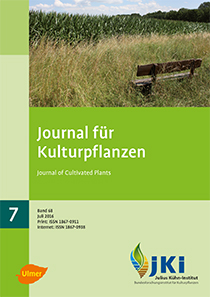Guano – a historical fertilizer
Keywords:
Chemical composition, Guano, history, mining, organic fertilizer, seabird excrementAbstract
As guanos are called natural mineral deposits of almost rainless hot-dry climatic regions composed by excrements, eggshells and carcasses of dead seabirds which are components of the correspondent manure used as fertilizer. The organic fertilizer is differed relating to its age, genesis, geographical origin, several animal producers and chemical composition. The main types are Nitrogen and Phosphate guanos. Phosphate guano requires a calcareous subsoil for the development, while Nitrogen guano deposits are formed under special climatic conditions as the area of the subtropical-edge tropical high pressure belt with coastal deserts. Its formation is marked by cold and highly nutritious waters. The most significant nitrogen guano is the Peru-guano, which has been used over 2000 years as agricultural fertilizer in Peru. In Europe emerged the application of guano as fertilizer in 1840 as “guano boom” and lasted until the early 20th century when Guano was replaced by industrial manufactured fertilizers. Upon Guano residues are exploited almost completely the Peruvian government started the sustainable guano retrieval Guano currently produced is discharged at preferential prices to the Peruvian rural population. Only a small quantity is still exported to Europe as fertilizer enhancement. A niche product is bat guano, which occupies a special position.
DOI: 10.5073/JfK.2016.07.02, https://doi.org/10.5073/JfK.2016.07.02
Downloads
Published
Issue
Section
License
The content of the journal is licensed under the Creative Commons Attribution 4.0 License. Any user is free to share and adapt (remix, transform, build upon) the content as long as the original publication is attributed (authors, title, year, journal, issue, pages).
The copyright of the published work remains with the authors. The authors grant the Journal of Cultivated Plants, the Julius Kühn-Institut and the OpenAgrar repository the non-exclusive right to distribute and exploit the work.







